Growing potatoes indoors might sound like something only seasoned gardeners can achieve, but I’m here to tell you it’s easier than you think! Forget battling unpredictable weather and pesky garden pests; imagine harvesting your own fresh, homegrown potatoes right from the comfort of your home.
For centuries, potatoes have been a staple food source, cultivated across diverse cultures and climates. From the Andean highlands where they originated to the bustling kitchens of today, potatoes have nourished generations. But did you know that you don’t need acres of farmland to enjoy the taste of freshly dug potatoes?
In today’s fast-paced world, many of us lack the time or space for traditional gardening. That’s where the magic of indoor gardening comes in! Growing potatoes indoors offers a fantastic solution for urban dwellers, apartment residents, or anyone simply looking for a fun and rewarding DIY project. Not only is it a great way to connect with nature, but it also provides a sustainable source of fresh produce. Plus, who wouldn’t love the bragging rights of saying, “I grew these potatoes myself!”? This article will guide you through simple, step-by-step instructions and clever hacks to successfully grow your own potato crop indoors, regardless of your gardening experience. Get ready to roll up your sleeves and embark on this exciting indoor gardening adventure!
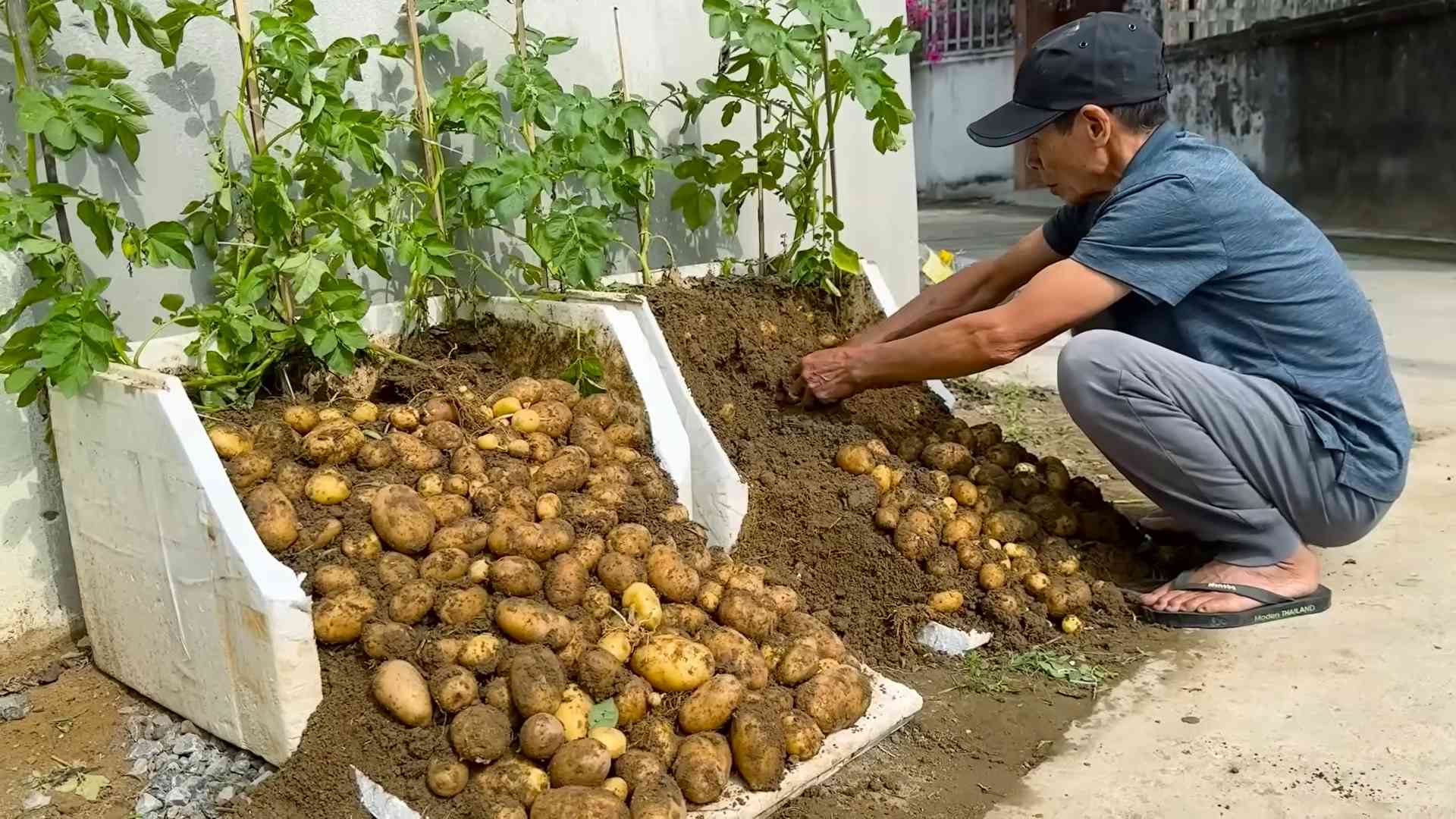
Growing Potatoes Indoors: A Spud-tacular DIY Guide!
Hey there, fellow gardening enthusiasts! Ever dreamt of harvesting your own potatoes without stepping foot outside? Well, dream no more! I’m going to walk you through the surprisingly simple process of growing potatoes indoors. It’s a fun, rewarding project, and you’ll be enjoying fresh, homegrown potatoes in no time.
What You’ll Need: The Potato Powerhouse Starter Kit
Before we dive in, let’s gather our supplies. This is what you’ll need to transform your indoor space into a mini potato farm:
* Seed Potatoes: These are your starting point! You can use certified seed potatoes from a garden center, or even organic potatoes from the grocery store that have started to sprout “eyes.” Avoid potatoes treated with sprout inhibitors.
* Large Container: Think big! A 10-gallon container or larger is ideal for each potato plant. A plastic storage bin, a large bucket, or even a repurposed trash can (cleaned thoroughly, of course!) will work.
* Well-Draining Potting Mix: This is crucial. Regular garden soil is too dense for container gardening. Opt for a high-quality potting mix that retains moisture but drains well.
* Grow Lights (Optional but Recommended): While potatoes can grow indoors with natural light, grow lights will significantly improve your yield and overall plant health, especially if you don’t have a super sunny spot.
* Watering Can or Hose: For keeping your potato plants hydrated.
* Fertilizer (Optional): A balanced, slow-release fertilizer can give your potatoes an extra boost.
* Sharp Knife (for cutting seed potatoes): Make sure it’s clean to prevent disease.
* Spray Bottle (for misting): Helps maintain humidity, especially in dry environments.
Preparing Your Seed Potatoes: Awakening the Spud
This is a crucial step to ensure your potatoes get off to a strong start.
1. Chitting (Sprouting) Your Potatoes: This process encourages the “eyes” on your potatoes to sprout before planting. Place your seed potatoes in a cool, bright location (but not direct sunlight) for a week or two. You’ll notice small green sprouts emerging from the eyes. This gives them a head start.
2. Cutting Large Seed Potatoes (Optional): If your seed potatoes are large (bigger than an egg), you can cut them into smaller pieces, ensuring each piece has at least 2-3 “eyes.” This will give you more plants from a single potato.
3. Curing Cut Seed Potatoes: After cutting, let the pieces sit for a day or two to allow the cut surfaces to dry and callous over. This helps prevent rot when you plant them.
Planting Your Potatoes: Burying the Treasure
Now for the fun part – getting those potatoes in the ground (or, in this case, the container!).
1. Prepare Your Container: Make sure your container has drainage holes. If not, drill some! Good drainage is essential to prevent root rot.
2. Add Potting Mix: Fill the container with about 4-6 inches of potting mix.
3. Plant the Seed Potatoes: Place the seed potatoes (sprouts facing up) on top of the potting mix, spacing them evenly if you’re planting multiple pieces in one container.
4. Cover with Potting Mix: Cover the seed potatoes with another 3-4 inches of potting mix.
5. Water Thoroughly: Water the soil until it’s evenly moist, but not soggy.
Caring for Your Indoor Potato Plants: Nurturing the Spuds
This is where the magic happens! Consistent care is key to a successful potato harvest.
1. Light: Potatoes need at least 6-8 hours of sunlight per day. If you don’t have a sunny window, use grow lights. Position the lights a few inches above the plants and adjust as they grow.
2. Watering: Keep the soil consistently moist, but not waterlogged. Water when the top inch of soil feels dry to the touch. Overwatering can lead to root rot.
3. Temperature: Potatoes prefer temperatures between 60-70°F (15-21°C). Avoid placing them near drafts or extreme temperature fluctuations.
4. Fertilizing (Optional): If you choose to fertilize, use a balanced, slow-release fertilizer according to the package instructions. Apply it every few weeks during the growing season.
5. Hilling: This is a crucial step for maximizing your potato yield. As the potato plants grow, new potatoes will form along the stems that are buried in the soil. When the stems reach about 6-8 inches tall, add more potting mix to the container, burying the lower portion of the stems, leaving only the top few leaves exposed. Repeat this process every few weeks until the container is nearly full. This encourages more potato production along the buried stems.
Troubleshooting: Addressing Common Potato Problems
Even with the best care, you might encounter a few challenges. Here are some common issues and how to address them:
* Yellowing Leaves: This could be a sign of overwatering, underwatering, nutrient deficiency, or pest infestation. Check the soil moisture, adjust your watering schedule, and consider fertilizing. Inspect the plants for pests.
* Leggy Growth: This indicates insufficient light. Move the plants to a sunnier location or use grow lights.
* Pests: Common potato pests include aphids, spider mites, and potato beetles. Inspect your plants regularly and treat infestations with insecticidal soap or neem oil.
* Root Rot: This is caused by overwatering and poor drainage. Ensure your container has drainage holes and avoid overwatering. If root rot is severe, you may need to repot the plant with fresh potting mix.
Harvesting Your Potatoes: The Grand Finale!
After about 80-100 days, your potatoes should be ready to harvest! Here’s how to know when it’s time:
1. Observe the Foliage: The leaves will start to turn yellow and die back. This is a sign that the plant is putting its energy into producing potatoes.
2. Test Harvest: Gently dig around the edges of the container to check the size of the potatoes. If they’re the size you want, it’s time to harvest!
3. Harvesting: Carefully tip the container onto its side and gently remove the potatoes from the soil. Be careful not to damage them.
4. Curing (Optional): If you plan to store your potatoes for a longer period, cure them for a week or two in a cool, dark, and well-ventilated place. This will help them develop a thicker skin and prevent spoilage.
Enjoying Your Homegrown Potatoes: From Garden to Plate
Congratulations! You’ve successfully grown potatoes indoors! Now it’s time to enjoy the fruits (or rather, the tubers) of your labor. Use your homegrown potatoes in your favorite recipes – mashed potatoes, roasted potatoes, potato salad, the possibilities are endless!
Extra Tips for Potato Perfection:
* Choose the Right Potato Variety: Some potato varieties are better suited for container gardening than others. Look for varieties that are compact and early-maturing, such as ‘Yukon Gold,’ ‘Red Norland,’ or ‘Fingerling.’
* Rotate Your Crops: Avoid planting potatoes in the same container year after year. This can help prevent soilborne diseases.
* Use Organic Practices: Opt for organic potting mix, fertilizer, and pest control methods to ensure your potatoes are healthy and free of harmful chemicals.
* Don’t Be Afraid to Experiment: Gardening is all about learning and experimenting. Try different techniques and see what works best for you.
Growing potatoes indoors is a fun and rewarding experience. With a little patience and care, you can enjoy fresh, homegrown potatoes year-round. Happy gardening!
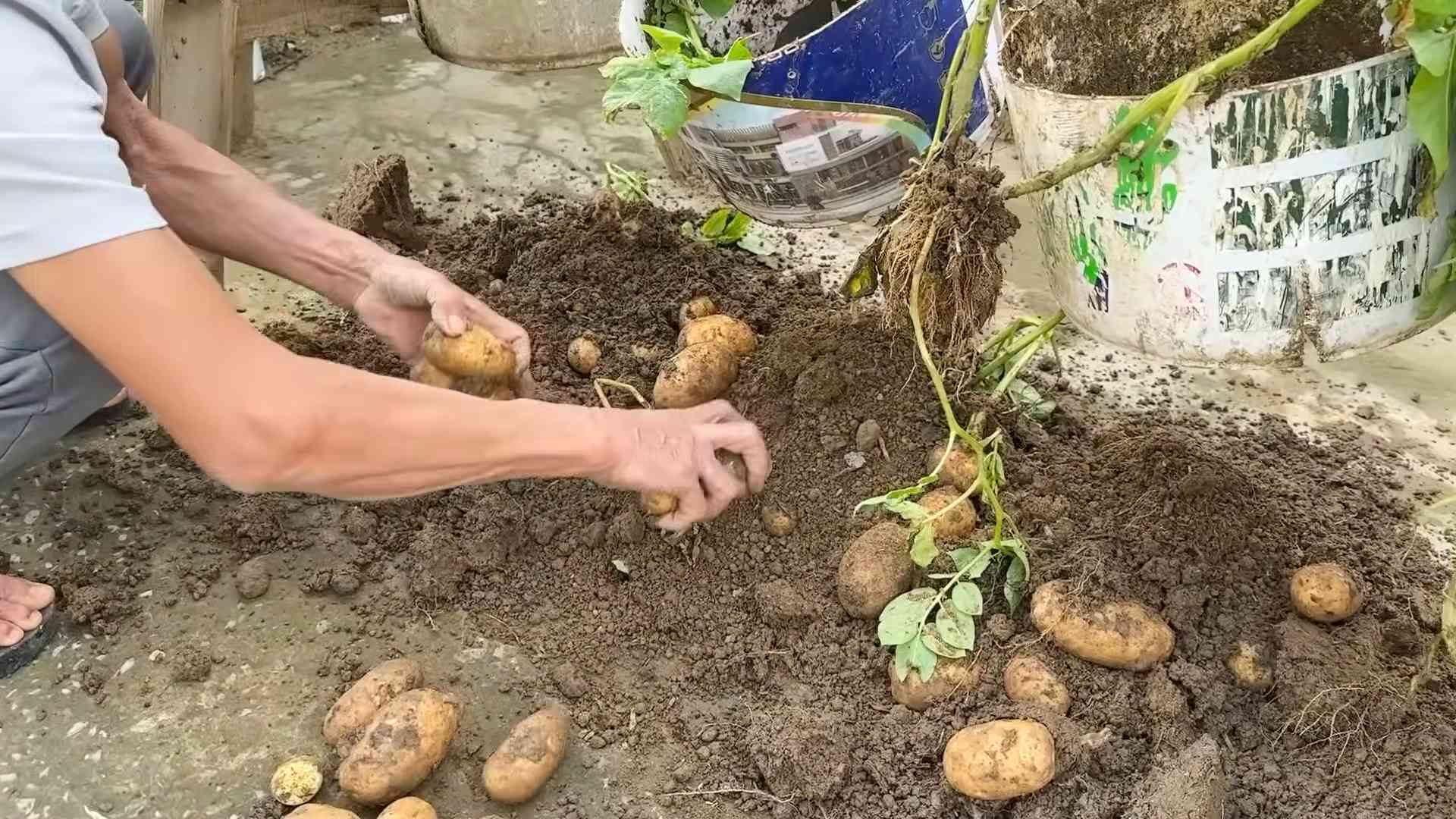
Conclusion
So, there you have it! Growing potatoes indoors isn’t just a quirky gardening experiment; it’s a genuinely rewarding experience that brings the bounty of the earth right into your home. From the satisfaction of nurturing a plant from a humble seed potato to the delicious reward of harvesting your own homegrown spuds, this DIY project is a must-try for any gardening enthusiast, urban dweller, or anyone simply looking for a fun and educational activity.
Why is this a must-try? Because it offers a unique blend of benefits. You gain control over your potato supply, ensuring you have access to fresh, organic produce free from harmful pesticides. You also get to witness the fascinating life cycle of a plant firsthand, a particularly enriching experience for children and those new to gardening. Plus, let’s be honest, there’s something incredibly satisfying about digging up your own potatoes – it’s like a treasure hunt in a pot!
But the beauty of growing potatoes indoors lies in its adaptability. Feel free to experiment with different potato varieties. Russets are great for baking, Yukon Golds are perfect for mashing, and fingerling potatoes offer a unique and delicate flavor. You can also adjust the size of your container to suit your space and desired yield. Want a smaller, more manageable project? Opt for a smaller pot and a single seed potato. Looking for a more substantial harvest? Go for a larger container and plant multiple seed potatoes.
Consider adding companion plants to your potato container. Marigolds can help deter pests, while basil can enhance the flavor of your potatoes. Just be sure to choose plants that have similar growing requirements.
Don’t be afraid to get creative with your growing medium. While a standard potting mix works well, you can also incorporate compost, perlite, or vermiculite to improve drainage and aeration.
The key to success with growing potatoes indoors is consistent care. Ensure your plants receive adequate sunlight, water, and nutrients. Monitor them regularly for pests and diseases, and take action promptly if any problems arise.
We wholeheartedly encourage you to embark on this exciting gardening adventure. It’s a fantastic way to connect with nature, learn new skills, and enjoy the delicious fruits (or rather, tubers) of your labor.
Once you’ve harvested your first crop of homegrown potatoes, we’d love to hear about your experience! Share your photos, tips, and tricks with us in the comments below. Let’s build a community of indoor potato growers and inspire others to give it a try. Happy growing!
Frequently Asked Questions (FAQ)
1. What kind of potatoes can I grow indoors?
You can grow almost any variety of potato indoors! However, some varieties are better suited for container gardening than others. Consider choosing smaller, bushier varieties like Yukon Gold, fingerling potatoes, or even red potatoes. These tend to be more compact and produce well in limited spaces. Russet potatoes, while delicious, can grow quite large and may require a larger container. Ultimately, the best variety depends on your personal preference and the size of your growing space. Experiment and see what works best for you!
2. How much sunlight do indoor potatoes need?
Potatoes need a significant amount of sunlight to thrive. Aim for at least 6-8 hours of direct sunlight per day. A south-facing window is ideal. If you don’t have access to enough natural light, you can supplement with grow lights. LED grow lights are energy-efficient and provide the full spectrum of light that plants need. Position the grow lights a few inches above the plants and adjust as they grow. Insufficient sunlight can lead to leggy growth and reduced tuber production.
3. What size container do I need for growing potatoes indoors?
The size of the container depends on the variety of potato you’re growing and the number of seed potatoes you’re planting. A good rule of thumb is to use a container that is at least 10-12 inches in diameter and 12 inches deep for a single seed potato. For larger varieties or multiple seed potatoes, you’ll need a larger container, such as a 5-gallon bucket or a large grow bag. Make sure the container has drainage holes to prevent waterlogging.
4. What kind of soil should I use for growing potatoes indoors?
Potatoes need well-draining soil that is rich in organic matter. A good potting mix is essential. You can also amend the potting mix with compost, perlite, or vermiculite to improve drainage and aeration. Avoid using garden soil, as it can be too heavy and may contain pests or diseases. The ideal pH for growing potatoes is between 5.5 and 6.5.
5. How often should I water my indoor potato plants?
Water your potato plants regularly, keeping the soil consistently moist but not waterlogged. Water when the top inch of soil feels dry to the touch. Avoid overwatering, as this can lead to root rot. The frequency of watering will depend on the size of the container, the temperature, and the humidity. During hot, dry weather, you may need to water more frequently.
6. How do I fertilize my indoor potato plants?
Potatoes are heavy feeders and need regular fertilization. Use a balanced fertilizer, such as a 10-10-10 or a 14-14-14, according to the package directions. You can also use an organic fertilizer, such as compost tea or fish emulsion. Fertilize every 2-3 weeks during the growing season. Avoid over-fertilizing, as this can lead to excessive foliage growth and reduced tuber production.
7. How do I “hill” my indoor potato plants?
“Hilling” is the process of adding soil around the stems of the potato plants as they grow. This encourages the plants to produce more tubers along the buried stems. As the plants grow, gradually add more soil to the container, leaving only the top few leaves exposed. Repeat this process every few weeks until the container is nearly full.
8. How long does it take to grow potatoes indoors?
It typically takes 80-100 days to grow potatoes indoors, from planting to harvest. The exact time will depend on the variety of potato, the growing conditions, and your climate. You’ll know the potatoes are ready to harvest when the foliage starts to turn yellow and die back.
9. How do I harvest my indoor potatoes?
Once the foliage has died back, stop watering the plants and let the soil dry out slightly. Then, carefully dig around the base of the plants and gently lift the potatoes out of the soil. Be careful not to damage the tubers.
10. What are some common problems when growing potatoes indoors?
Some common problems when growing potatoes indoors include pests, diseases, and nutrient deficiencies. Monitor your plants regularly for signs of trouble. Aphids, spider mites, and potato beetles can be controlled with insecticidal soap or neem oil. Early blight and late blight are fungal diseases that can be prevented with good air circulation and proper watering. Nutrient deficiencies can be corrected with fertilizer.
11. Can I grow potatoes indoors from store-bought potatoes?
Yes, you can grow potatoes indoors from store-bought potatoes, but it’s best to use organic potatoes to avoid any potential chemical treatments that may inhibit sprouting. Look for potatoes that have “eyes” or small sprouts. Cut the potato into pieces, making sure each piece has at least one eye. Let the pieces dry for a day or two before planting to prevent rotting.
12. How do I store my harvested potatoes?
Store your harvested potatoes in a cool, dark, and dry place. A temperature of 45-50°F (7-10°C) is ideal. Avoid storing potatoes in the refrigerator, as this can cause them to turn sweet. Properly stored potatoes can last for several months.

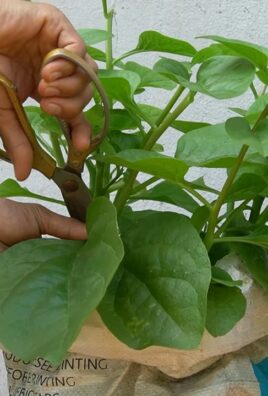
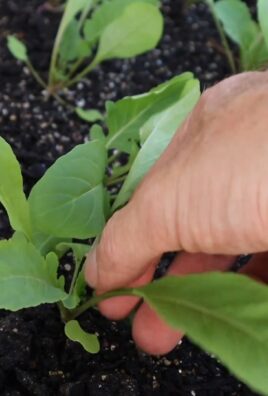
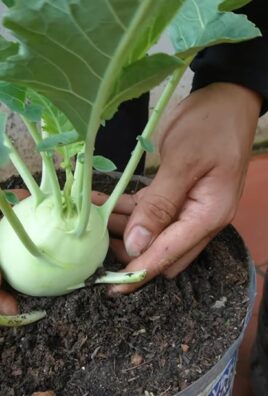
Leave a Comment